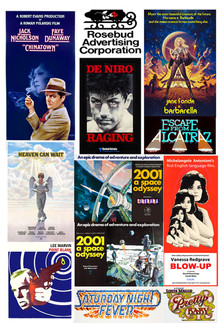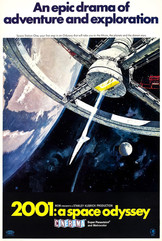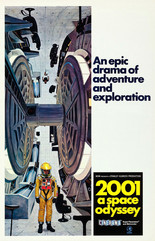Merv Bloch: A Lifelong Movie Marketing Odyssey
- Adam McDaniel
- May 19, 2024
- 5 min read
Updated: Jun 5, 2024
The interviews done for the documentary include some distinguished names in the advertising world, from Spiros Angelikas to Mike Salisbury. I feel terrible that it’s taken me this long to give a proper writeup to another such legend, Merv Bloch.

Bloch is jack of many creative trades, and any summary I provide here is sure to understate his achievements. He produced 1971’s subversive sexploitation satire THE TELEPHONE BOOK (which has undergone a cult reappraisal in recent years), but has worked as a marketing and advertising director for over 50 years. He’s the man behind some of the most famous film campaigns of all time. (More on that later.)
Bloch reached out to me in August, 2018, regarding a retrospective book he was developing on his career. He was in need of some high quality images of Richard Amsel’s artwork. It would be the beginning of a wonderful correspondence.
“I've been in the motion picture advertising business since maybe the beginning of the sixties. I had my own company called Rosebud Advertising Corporation, which was my homage to Orson Welles. I also had another company called Bloch Film Company, and they were involved in the creation and production of movie trailers and television commercials. And back in those days, there were even radio commercials for motion pictures. I've been also involved in in New York's underground film movement and made a feature film that probably very few people saw called THE TELEPHONE BOOK. It was an X-rated movie but it was a very literate X-rated movie. It wasn't like DEEP THROAT. And at the time it was dismissed as a vulgar attempted humor, but today it's considered a missing masterpiece, and you can buy it on Amazon.”
While at Rosebud, Bloch commissioned Amsel to create a number of poster illustrations, including MURDER ON THE ORIENT EXPRESS, DEATH ON THE NILE, PAPILLON, NASHVILLE, THE LAST TYCOON, COAL MINER’S DAUGHTER, THE SHOOTIST, THE INCREDIBLE SHRINKING WOMAN, JULIA, THE ROSE, and VOYAGE OF THE DAMNED.
Perhaps Bloch’s favorite Amsel piece, however, was his poster for CHINATOWN. While Jim Pearsall’s iconic poster artwork for the classic 1974 noir thriller remains better known, Amsel’s poster was used in select foreign markets. Bloch intends to feature it on the cover of his forthcoming book, Selling Celluloid Dreams: Merv Bloch and the Art of Movie Advertising.

I met Bloch at his beautiful, Central Park West apartment in late 2019, during a New York trip shortly before the COVID outbreak. Naturally, his home was adorned with some stunning original art, including a giant Bob Peak portrait of Marlon Brando, done for THE MISSOURI BREAKS. (Yet more triva: Bloch previously lived in the same art deco building where Sigourney Weaver became possessed in Ghostbusters!)


“My first impression of Richard Amsel when he walked in my office, ‘cause I had never seen this before,” Bloch said. “He had two different colored eyes. Now he may have had a green eye and I'm not sure whether the other eye was blue or brown, but I was taken by the fact I had never met anyone face to face with two different colored eyes, which may explain his extraordinary talent, you know, that he saw things through two different colored eyes.”
Bloch shared with me several albums filled with photographs and comps of various film campaigns he’d been a part of over the years. Any one of them could mark the prized pinnacle of a creative’s career, from the David Lean epics LAWRENCE OF ARABIA and DOCTOR ZHIVAGO, to DON’T LOOK NOW and PAPER MOON, to STAR TREK: THE MOTION PICTURE…and another seminal sci-fi epic. (Again, more on that later.)
Bloch smiles as we discuss Amsel’s work, sharing insight and personal stories behind each of them, title by title. I won’t divulge everything he said here, as naturally I intend to save it for the book and film.
In the meantime, here are some little snippets I’m willing to share which don’t give too much away:
“Amsel saved my ass,” he said. “You know, he made my life much easier. Because I could trust him with these wonderful concepts, you know, and whether he did his Art Deco number or Art Nouveau or Norman Rockwell. He was the best. An inimitable style.”
On how poster illustration declined following Amsel’s death: “You could say the golden age of movie advertising was over. And I bring that out in my book. You know, we used to work on easels. And suddenly, this new thing, this computer graphics came into being. And also you have to understand that movie posters and people were not the young generation, the movie going generation, they were not enamored with, with graphic arts, you know. They were into their soon their cell phones and their, you know, computers, and things. And the companies recognize that and, you know, they spent a lot of money on, on trailers, you know, which were, you know, in your face everywhere, and television commercials. And posters really became eye candy for producers who went to the theater, you know, to see their one sheet posters and behind showcases. It's a shame. But yeah, it was sort of the tale. It was the tail end of the Golden Age of movie advertisement. … I mean, illustration was predominant. Rarely did we use photographic material. I mean, I did on some occasions. But illustration art was the way to sell a movie. You could put so much into a piece of art that you couldn't with a photograph.”
Bloch’s extensive collection of motion picture advertising represents a significant contribution to both entertainment art and the moviegoing experience. He recently donated much of his archive to The Harry Ransom Center at The University of Texas at Austin.
The Ransom Center is an internationally renowned humanities research center at The University of Texas at Austin. Our extensive collections provide unique insight into the creative process of some of our finest writers and artists, deepening the understanding and appreciation of literature, photography, film, art, and the performing arts.
Heartfelt thanks to Merv Bloch for his generosity and friendship. (And Merv, I promise to promote your book as best I can when the time comes!)
P.S.: The seminal sci-fi epic I referred to earlier was – drumroll, please – nothing less than Stanley Kubrick’s monumental 2001: A SPACE ODYSSEY. That film’s marketing warrants a documentary of its own, but here’s a great article that sums it up.
Bloch, in fact, even credits Kubrick for sparking his early interest in filmmaking, when he saw the young auteur directing a scene from KILLER’S KISS (1955) one floor beneath his family’s apartment!
















Comments